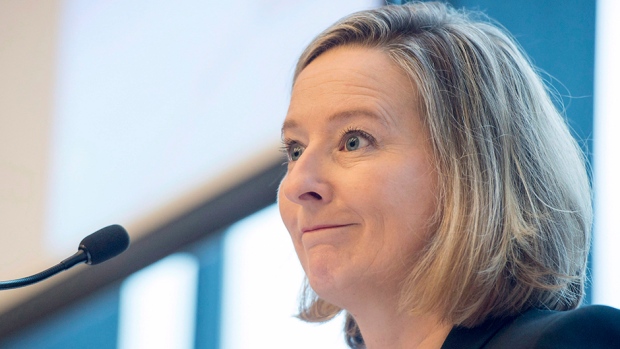Fancy Apartment Rentals for Paris Olympics See Poor Demand and Price Cuts
Locals who’d hoped to turn a big profit by renting out their posh apartments are now slashing prices by 30%-60%.
Latest Videos
The information you requested is not available at this time, please check back again soon.
Locals who’d hoped to turn a big profit by renting out their posh apartments are now slashing prices by 30%-60%.
The kingdom must overcome a conservative image and concern about human rights. Visit the desert oasis town of AlUla to understand the challenge.

Jury selection was completed Friday for Donald Trump’s first criminal trial, setting the stage for opening arguments Monday in a New York case accusing the former president of falsifying business records to conceal a sex scandal before the 2016 election.

Higher-than-expected interest rates amid persistent inflation are perceived as the biggest threat to financial stability among market participants and observers, according to the Federal Reserve.

Fifth Third Bancorp jumped the most in four months, leading bank stocks higher, with Chief Executive Officer Tim Spence predicting that income from lending has bottomed out.
Oct 6, 2016
, The Globe and Mail

The Bank of Canada is endorsing the Trudeau government’s efforts to cool the country’s debt-fueled housing market.
“Over time, the measures announced by the federal government . . . will help mitigate risks to the financial system posed by household imbalances,” Senior Deputy Governor Carolyn Wilkins said in remarks prepared for a speech Thursday in Trois-Rivières, Que.
Even with the economy still struggling to gain traction, the central bank has set a high bar for cutting its key interest rate at its next scheduled rate-setting announcement Oct. 19.
“We are mindful that low interest rates can lead to a buildup in financial vulnerabilities,” Ms. Wilkins pointed out.
She added that the bank is continuing to monitor high household debt levels and the housing market “very closely.”
The bank has held its benchmark rate steady at 0.5 per cent following two cuts in 2015.
On Monday, Finance Minister Bill Morneau announced measures to restrict access to mortgage insurance and crack down on speculators, including foreigners, who flip homes without paying capital gains. He also launched talks with the country’s big banks and other lenders to get them to share more of the risk of taxpayer-backed mortgage insurance.
In her speech, Ms. Wilkins acknowledged that that the Canadian economy’s climb back from the recession and the oil price shock has been uneven, and that “material slack” remains.
“The adjustments are clearly under way,” she said. “There has been progress, but also a few setbacks.”
Ms. Wilkins pointed to weaker than expected U.S. growth and lingering “uncertainty” about the strength of investment in Canada’s key export market.
The central bank, which is due to release its next closely watched quarterly forecast in two weeks, is already warning that it will downgrade its outlook. In September, the bank said its inflation outlook had “tilted somewhat to the downside.”
The bank’s current forecast calls for GDP growth of 1.3 per cent this year, 2.2 per cent in 2017 and 2.1 per cent in 2018.
On the positive side, Ms. Wilkins said the energy sector is showing tentative signs of bottoming out, after a massive plunge in investment, particularly in the oil sands.
“When we talk to company leaders, they tell us that the pace of the investment cuts may be easing,” she remarked. “And while it appears that oil rig activity has troughed, it is too early to say that the cuts to investment are behind us.”
Investment in the energy sector has tumbled 60 per cent since 2014, and tens of thousands of jobs have been lost.
“Adjustment in employment and wages may also continue for some time,” she added.
Ms. Wilkins also expressed concern about the lack of business investment outside the oil patch. “The lethargy in business investment is broad-based and started before the oil price shock,” she said, noting the spending on research-and-development has been declining for the past four years.
Ms. Wilkins said the bank is also watching closely for a “sustained pickup in non-commodity exports and sustained growth in the rest of the economy.
She also highlighted the bank’s longer-term concern about the aging profile of the workforce and declining productivity growth. Both factors are severely squeezing the economy’s ability to grow.